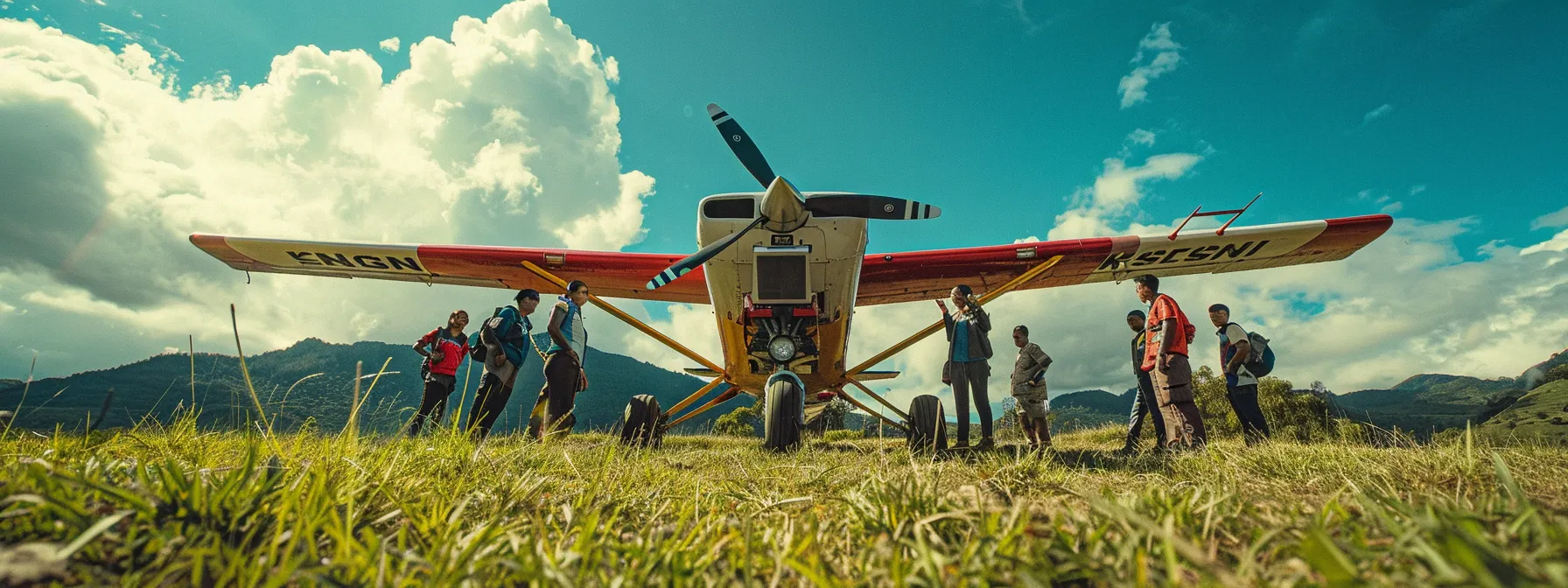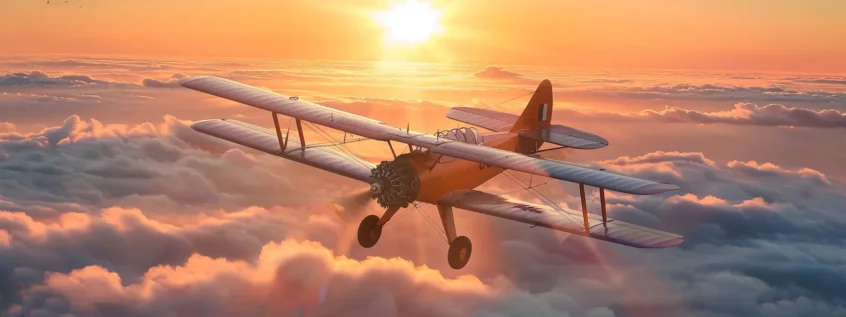Backcountry Flying: From Routine to Adventure in the Wild | Backcountry Flying
Tom Grayson flew for nearly a decade, but by spring 2025, the excitement faded. A 42-year-old accountant from Boise, Idaho, he earned his private pilot’s license in his 30s. His passion stemmed from childhood stories of barnstormers and bush pilots. Initially, his Cessna 172 carried him on weekend trips—pattern work, $100 hamburger runs, and visits to his sister in Oregon. However, these flights grew safe, predictable, and dull. Over coffee at the FBO, he admitted it: general aviation felt routine. He craved something raw. That’s when backcountry flying entered his life.
Late one night, a YouTube video sparked his interest. A CubCrafters Carbon Cub landed on a Salmon River gravel bar in under 150 feet. Dust swirled as the pilot stepped out with a fishing rod and vanished into the pines. “That’s real flying,” Tom muttered, captivated. The next weekend, he attended a local fly-in. There, STOL planes danced on grass strips, and pilots spoke of mountain airstrips with reverence. Instantly, he was hooked. He wanted to dive into backcountry flying.
 Starting Your Backcountry Flying Journey
Starting Your Backcountry Flying Journey
Getting started wasn’t simple. Tom’s Cessna 172 could manage some backcountry strips, but its tricycle gear struggled on rugged terrain. So, he enrolled in a tailwheel course. He logged hours in a worn Piper Cub, smoothing out bumpy landings. “Feel the plane, don’t just fly it,” his instructor barked after a rough rollout. Next, he attended a backcountry flying seminar. There, he mastered short-field techniques, high-altitude math, and survival kit prep. These lessons felt like adventure training, not just aviation.
Eventually, he traded his 172 for a Kitfox. This lightweight STOL plane needed work, so he spent months tweaking it. He added tundra tires and a stronger prop in his garage. “It’s not pretty,” he told a friend, “but it’ll get me there.” His first trip was to Johnson Creek, Idaho—a 3,550-foot runway between peaks. Though tame by STOL standards, it tested him. The steep descent through swirling winds jolted his Kitfox. He landed in 200 feet, heart pounding.
Stepping out, he felt deep silence, broken only by a creek. No traffic or chatter—just wilderness. He camped under the wing, cooked a trout, and slept to pine whispers. “This is what I missed,” he said to the stars. For more insights, visit Backcountry Flying Safety Tips.
How Backcountry Flying Transforms Pilots
That trip shifted Tom’s world. Backcountry flying wasn’t just a skill—it was a lens. At home, he’d been a steady but detached numbers guy. The wilderness changed that. Every flight demanded focus—reading terrain, gauging winds, knowing his Kitfox’s limits. A sloppy approach to a 500-foot gravel bar could wreck more than his pride. “You can’t slack off,” he told Lisa after a gusty landing. Thus, he shed his autopilot habits. His piloting sharpened overnight.
Moreover, the backcountry rewired him beyond skills. Hours alone with engine hum and vast wildness altered him. One weekend at Big Creek, he met Cal, a retired bush pilot. Over coffee, Cal shared tales of remote supply runs. “Flying shows you life,” Cal said, eyeing the horizon. Tom saw it too—the fragility of wet airstrips, the patience for weather, the humility of nature’s rules. He began packing out trash and checking strips for erosion. These acts outgrew his old, small life.
Back in Boise, Lisa noticed first. “You’re softer now,” she said, watching him plan a flight. He stopped fussing over traffic or printers. At work, he listened more, snapped less. When a coworker lost a parent, Tom brought a meal—not just a card. The backcountry taught him presence—being fully there, in flight or grief. “I flew to escape,” he told Cal by a campfire. “Now, I fly to connect.”
Building Skills for Backcountry Flying
Backcountry flying demands preparation. First, Tom tackled tailwheel training. This built control for rough strips. According to the FAA, precision landings are key in tight spaces. Next, he studied short-field takeoffs and landings. These skills cut his rollout distance. He also learned high-altitude flying. Thin air affects performance, so he adjusted his Kitfox accordingly.
Additionally, survival training proved vital. He packed a kit with food, water, and a beacon. The AOPA stresses preparedness for remote emergencies. Weather knowledge grew crucial too. He checked Aviation Weather before every flight. Storms can trap pilots in the wild. With practice, his confidence soared. He was ready for tougher strips.
Top Backcountry Airstrips to Explore
America’s backcountry offers stunning airstrips. Here are three favorites.
Johnson Creek, Idaho
This 3,550-foot strip suits beginners. Nestled in peaks, it has camping and trails. Winds can challenge, but it’s rewarding.
Big Creek, Idaho
Big Creek tests pilots with a steep approach. Surrounded by mountains, it’s breathtaking. Nearby wilderness adds adventure.
Middle Fork, Salmon River
A remote gravel bar, this spot needs skill. Silence and solitude define it. Tundra tires shine here.
Discover more at Top 10 Backcountry Airstrips.
Safety Essentials for Backcountry Flying
Backcountry flying thrills, but safety comes first. Here’s how to stay secure.
Pre-Flight Checks
Always inspect your plane. Fuel, tires, and controls must be perfect. The FAA’s checklist prevents surprises.
Weather Awareness
Monitor forecasts closely. Sudden storms can ground you. Use reliable tools like Aviation Weather.
Emergency Gear
Carry survival essentials—food, water, a multi-tool. A beacon can save your life. The EAA lists must-haves.
For more, see Aviation Safety Tips.
Why Join an Aviation Community?
Tom’s Kitfox bridged him to community. He joined the E3 Aviation Association via their SkyShare platform. This mapped hidden strips—like a 600-foot Utah patch or a Montana lake shore. Each trip taught guts and grace. Plus, E3 offered STOL webinars and pilot tips. “SkyShare found a strip, and E3 notes nailed the landing,” he told Lisa.
Meanwhile, communities like E3 boost skills. They share training resources and safety advice. New pilots gain mentors. Discounts on gear sweeten the deal. Curious? Check Why Join E3 Aviation Association?.
The Personal Impact of Backcountry Flying
One summer, Tom landed on the Middle Fork gravel bar. No cell signal—just quiet. He shut off the engine and stood still. A year ago, he’d been bored, circling airports. Now, his tires were muddy, his hands steady, his heart full. Backcountry flying sharpened his skills like a blade. More importantly, it grounded him. He felt awake, alive in new ways.
Back home, this carried over. He tackled life with patience, not frustration. At work, he supported colleagues with empathy. In the wild, he respected nature’s lessons. Casting a line by his Kitfox, he grinned. This wasn’t just flying—it was living. Ready to start? Learn more at FAA Safety.
For more E3 Aviation resources, be sure to visit: https://e3aviationassociation.com

